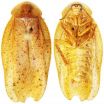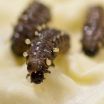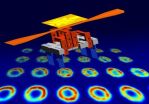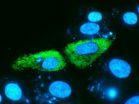(Press-News.org) A European study published in the 'Cancer Epidemiology, Biomarkers & Prevention' journal has analysed the association between physical activities and in situ or non-invasive breast cancer, or, in other words, cancer that has not yet invaded cells within or outside of the breast.
Headed by researchers from ten European countries including Spain, the work carried out under the framework of the European Prospective Investigation into Cancer and Nutrition (EPIC) concludes that physical activity has no relation with the risk of developing this type of non-invasive cancer.
After more than eleven years following a European cohort of 283,927 women, 1,059 of whom had in situ cancer, the authors also found no association depending on exercise type.
In addition, the results did not vary between women of pre- and post-menopausal age or between obese and non-obese women. The same does not occur in the case of invasive cancer, where epidemiological studies have demonstrated that this factor is associated with a lesser risk.
"The aetiology (cause) of in situ breast cancer could be different to that of invasive breast cancer, or rather physical activity has a protective effect only in later stages of the carcinogenesis process. This would explain why no association has been found in non-invasive breast cancer," upholds María José Sánchez Pérez, Director of the Granada Cancer Registry and one of the authors of the study.
An in situ ductal carcinoma of the breast is the most frequent form of non-invasive breast cancer in women and is a risk factor or precursor for the development of invasive breast cancer. Therefore, the association between physical activity and this cancer would indicate that exercise could act as a protective factor in the early stages of the carcinogenesis process. However, it has been found that this is not the case.
Different results for invasive cancer
A previous study carried out on the same cohort investigated the association between physical activity and the risk of developing invasive breast cancer. It was discovered that physically active menopausal women have a 14% less chance of developing this cancer compared to their sedimentary menopausal counterparts.
The results revealed that moderate to intense physical activity in general decreases the risk of developing breast cancer by 8% and 14% respectively. This effect was similar for recreational physical activity and domestic chores.
In fact, in the expert report published by the World Cancer Research Fund (WCRF) in 2007, as well as in its updated version in 2010, it was confirmed that there is enough evidence on the protective effects of physical activity but this evidence is somewhat more convincing in the case of menopausal women.
One of the most frequent of tumours
Breast cancer continues to be the most frequent of cancers amongst women living in developed countries. Despite experiencing a decrease over the last decade, its incidence still remains high due to the lifestyle of the population: reproduction patterns, diet, sedentary lifestyle, etc.
At present primary prevention constitutes the main approach in the attempt to reduce the incidence of this cancer. "Thanks to sufficient evidence, the risk factors associated with breast cancer are obesity in menopausal women and alcohol consumption, whereas physical activity and breastfeeding provide protection against the development of this cancer," concludes Sánchez.
INFORMATION:
Reference:
Steindorf K, Ritte R, Tjonneland A, Johnsen NF, Overvad K, Ostergaard JN, Clavel-Chapelon F, Fournier A, Dossus L, Lukanova A, Chang-Claude J, Boeing H, Wientzek A, Trichopoulou A, Karapetyan T, Trichopoulos D, Masala G, Krogh V, Mattiello A, Tumino R, Polidoro S, Quirós JR, Travier N, Sánchez MJ, Navarro C, Ardanaz E, Amiano P, Bueno-de-Mesquita HB, van Duijnhoven FJ, Monninkhof E, May AM, Khaw KT, Wareham N, Key TJ, Travis RC, Borch KB, Fedirko V, Rinaldi S, Romieu I, Wark PA, Norat T, Riboli E, Kaaks R. "Prospective study on physical activity and risk of in situ breast cáncer". Cancer Epidemiol Biomarkers Prev 2012 Dec; 21(12):2209-19. doi: 10.1158/1055-9965.EPI-12-0961.
Steindorf K, Ritte R, Eomois PP, Lukanova A, Tjonneland A, Johnsen NF, Overvad K, Ostergaard JN, Clavel-Chapelon F, Fournier A, Dossus L, Teucher B, Rohrmann S, Boeing H, Wientzek A, Trichopoulou A, Karapetyan T, Trichopoulos D, Masala G, Berrino F, Mattiello A, Tumino R, Ricceri F, Quirós JR, Travier N, Sánchez MJ, Navarro C, Ardanaz E, Amiano P, Bueno-de-Mesquita HB, van Duijnhoven F, Monninkhof E, May AM, Khaw KT, Wareham N, Key TJ, Travis RC, Borch KB, Sund M, Andersson A, Fedirko V, Rinaldi S, Romieu I, Wahrendorf J, Riboli E, Kaaks R. "Physical activity and risk of breast cancer overall and by hormone receptor status: The European prospective investigation into cancer and nutrition". Int J Cancer. 2013 Apr 1;132(7):1667-78. doi: 10.1002/ijc.27778. doi: 10.1002/ijc.27778. Epub 2012 Sep 14.
Contact:
María José Sánchez Pérez
Directora del Registro de Cáncer de Granada
Escuela Andaluza de Salud Pública
Telf. 34-958-027-461; 34-670-946-679 (746679)
E-mail: mariajose.sanchez.easp@juntadeandalucia.es
www.cancergranada.org - www.easp.es
Physical activity does not protect against in situ breast cancer
The most important epidemiological study to date on the matter
2013-02-28
ELSE PRESS RELEASES FROM THIS DATE:
Eating junk food while pregnant may make your child a junk food addict
2013-02-28
Bethesda, MD—Here's another reason why a healthy diet during pregnancy is critical to the future health of your children: New research published in the March 2013 issue of The FASEB Journal, suggests that pregnant mothers who consume junk food actually cause changes in the development of the opioid signaling pathway in the brains of their unborn children. This change results in the babies being less sensitive to opioids, which are released upon consumption of foods that are high in fat and sugar. In turn, these children, born with a higher "tolerance" to junk food need ...
Global tipping point not backed by science: Study
2013-02-28
A group of international ecological scientists led by the University of Adelaide have rejected a doomsday-like scenario of sudden, irreversible change to the Earth's ecology.
In a paper published today in the journal Trends in Ecology and Evolution, the scientists from Australia, US and UK argue that global-scale ecological tipping points are unlikely and that ecological change over large areas seem to follow a more gradual, smooth pattern.
This opposes recent efforts to define 'planetary tipping points' ‒ critical levels of biodiversity loss or land-use change ...
The giant cockroach genus Pseudophoraspis expands to the north with 3 new species
2013-02-28
Cockroaches (Blattodea) are an insect order remarkable in their biodiversity and distribution, with more than 4500 species known and great geographical reach. Cockroach fossils date back around 400 million years, which testifies to their great adaptability and endurance that puts them among the planet's great survivors.
The cockroach genus Pseudophoraspism has has been reported from China for the first time thanks to the discovery of three new species: Pseudophoraspis clavellata, Pseudophoraspis recurvata and Pseudophoraspis incurvata, alongside the first regional record ...
Metal ions regulate terpenoid metabolism in insects
2013-02-28
This press release is available in German.
Max Planck scientists in Jena, Germany, have discovered an unusual regulation of enzymes that catalyze chain elongation in an important secondary metabolism, the terpenoid pathway. In the horseradish leaf beetle Phaedon cochleariae a single enzyme can trigger the production of two completely different substances depending on whether it is regulated by cobalt, manganese or magnesium ions: iridoids, which are defensive substances the larvae use to repel predators, or juvenile hormones, which control insect's development. Insects ...
Study led by NUS researchers proves the existence of 3 overstretched DNA structures
2013-02-28
A team of researchers led by Associate Professor Yan Jie from the Department of Physics at the National University of Singapore (NUS) Faculty of Science has identified three new distinct overstretched deoxyribonucleic acid (DNA) structures caused by mechanical stretching. This discovery provides a clear answer to a long-running debate among scientists over the nature of DNA overstretching.
Debate on Possible DNA Structural Transitions
Recent single-molecule studies revealed that mechanical stretching could induce transitions to elongated DNA structures. Three possible ...
Atoms with quantum memory
2013-02-28
This press release is available in German.
Ice cubes in a cocktail glass melt until an equilibrium state is reached in which the ice cubes are gone. After that, the geometric shape of the ice cubes is completely lost. The liquid does not contain any memory of their shape, the ordered ice crystal has turned into disordered water molecules. Ultra cold Bose-Einstein condensates behave differently; these highly ordered clouds of ultra cold particles also approach a disordered equilibrium state, but they retain some "memory" about their initial state for a remarkably long ...
Mayo Clinic finds steroids may shorten hospital stay for pneumonia patients
2013-02-28
ROCHESTER, Minn. — Patients with pneumonia may spend fewer days in the hospital if they are given steroids along with antibiotics and supportive care. That's the finding of a Mayo Clinic analysis of eight randomized-controlled clinical trials involving more than 1,100 patients. The results appear in the March issue of the Journal of Hospital Medicine.
"Given that the average hospital stay for community-acquired pneumonia can range from nine to 23 days, the prospect of speeding recovery, even by a day or two, is helpful," says co-author M. Rizwan Sohail, M.D., a Mayo infectious ...
'Crazy-busy' Canadians under pressure on the job
2013-02-28
Having more control in the workplace can have negative consequences for individuals but it depends on the form of job control, according to new research out of the University of Toronto.
Sociologist Scott Schieman measured a range of work conditions using data from a national survey of 6,004 Canadian workers. To measure levels of job pressure, he asked study participants questions such as: "How often do you feel overwhelmed by how much you had to do at work?" "How often do you have to work on too many tasks at the same time?" and "How often do the demands of your job ...
Discoveries suggest icy cosmic start for amino acids and DNA ingredients
2013-02-28
Using new technology at the telescope and in laboratories, researchers have discovered an important pair of prebiotic molecules in interstellar space. The discoveries indicate that some basic chemicals that are key steps on the way to life may have formed on dusty ice grains floating between the stars.
The scientists used the National Science Foundation's Green Bank Telescope (GBT) in West Virginia to study a giant cloud of gas some 25,000 light-years from Earth, near the center of our Milky Way Galaxy. The chemicals they found in that cloud include a molecule thought ...
Researchers show that lipid nanoparticles are ideal for delivering genes and drugs
2013-02-28
This press release is available in Spanish.
At the Faculty of Pharmacy of the Basque Public University (UPV/EHU) the Pharmacokinetics, Nanotechnology and Gene Therapy research team is using nanotechnology to develop new formulations that can be applied to drugs and gene therapy.Specifically, they are using nanoparticles todesignsystems for delivering genes and drugs; this helps to get the genes and drugs to the point of action so that they can produce the desired effect.
The research team has shown that lipid nanoparticles, which they have been working on for several ...
LAST 30 PRESS RELEASES:
Scalable and healable gradient textiles for multi‑scenario radiative cooling via bicomponent blow spinning
Research shows informed traders never let a good climate crisis go to waste
Intelligent XGBoost framework enhances asphalt pavement skid resistance assessment
Dual-function biomaterials for postoperative osteosarcoma: Tumor suppression and bone regeneration
New framework reveals where transport emissions concentrate in Singapore
NTP-enhanced lattice oxygen activation in Ce-Co catalysts for low-temperature soot combustion
Synergistic interface engineering in Cu-Zn-Ce catalysts for efficient CO2 hydrogenation to methanol
COVID-19 leaves a lasting mark on the human brain
Scientists use ultrasound to soften and treat cancer tumors without damaging healthy tissue
Community swimming program for Black youth boosts skills, sense of belonging, study finds
Specific depressive symptoms in midlife linked to increased dementia risk
An ‘illuminating’ design sheds light on cholesterol
Who is more likely to get long COVID?
Study showcases resilience and rapid growth of “living rocks”
Naval Research Lab diver earns Office of Naval Research 2025 Sailor of the Year
New Mayo-led study establishes practical definition for rapidly progressive dementia
Fossil fuel industry’s “climate false solutions” reinforce its power and aggravate environmental injustice
Researchers reveal bias in a widely used measure of algorithm performance
Alcohol causes cancer. A study from IOCB Prague confirms damage to DNA and shows how cells defend against it
Hidden viruses in wastewater treatment may shape public health risks, study finds
Unlock the power of nature: how biomass can transform climate mitigation
Biochar reshapes hidden soil microbes that capture carbon dioxide in farmland
Reducing saturated fat intake shows mortality benefit, but only in high-risk individuals
Manta rays create mobile ecosystems, study finds
Study: Mixed results in using lipoic acid to treat progressive multiple sclerosis
Norbert Holtkamp appointed director of Fermi National Accelerator Laboratory
New agentic AI platform accelerates advanced optics design
Biologists discover neurons use physical signals — not electricity — to stabilize communication
Researchers discover that a hormone can access the brain by hitchhiking
University of Oklahoma researcher awarded funding to pursue AI-powered material design
[Press-News.org] Physical activity does not protect against in situ breast cancerThe most important epidemiological study to date on the matter





